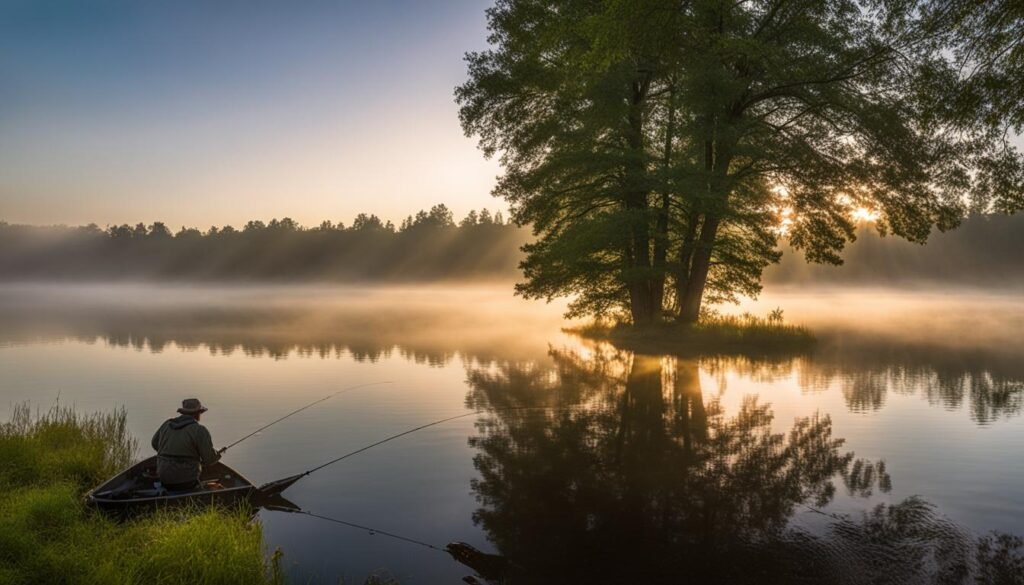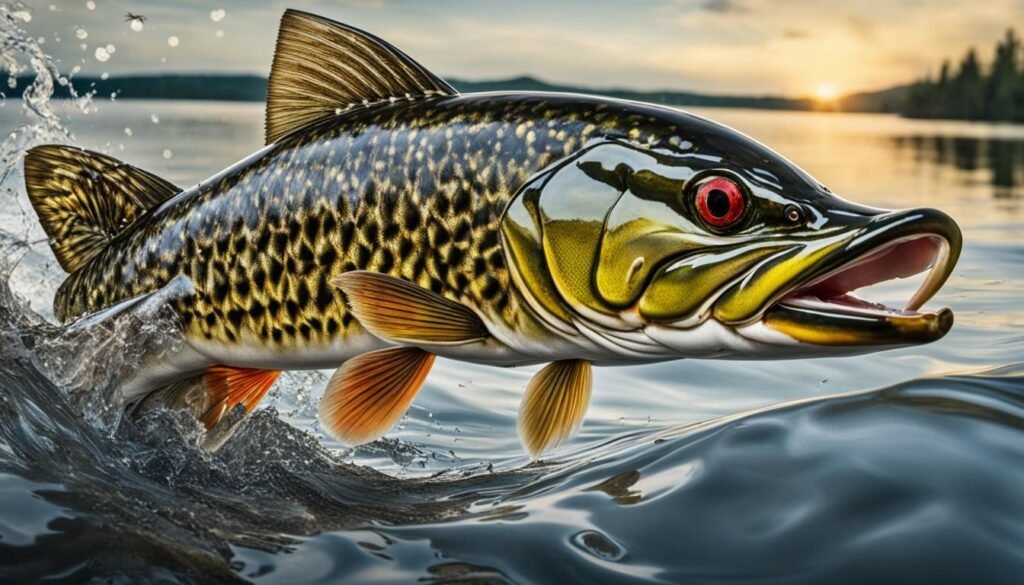When it comes to pike fly fishing, having the right flies can make all the difference. These voracious predators demand large streamers that imitate their preferred prey, such as frogs, smaller fish, waterfowl, mice, and squirrels.
Essential Gear for Pike Fly Fishing
When it comes to pike fly fishing, having the right gear is crucial for a successful and enjoyable experience. Here are some essential gear items that you should consider for your pike fly fishing adventures:
Fly Rod
A sturdy and powerful fly rod is essential for casting heavy flies and handling the aggressive strikes of pike. Opt for a rod with a weight between 7 to 10, which provides the strength and backbone needed for battling these fierce predators.
Fly Reel
Choose a fly reel with a smooth drag system that can handle the strong runs and sudden bursts of power from pike. Look for a reel that has a large arbor design, which will allow you to retrieve line quickly when necessary.
Fly Line
Use a weight-forward floating fly line specifically designed for pike fly fishing. This type of line will help you cast large flies with ease and provide better control during the retrieve. Consider opting for a line with a color that contrasts with the water, making it easier for you to track your fly and detect subtle strikes.
Leaders and Tippets
Due to the sharp teeth of pike, it’s crucial to use a strong and durable leader material. A wire tippet is recommended to prevent bite-offs and ensure that your line remains intact. When choosing a wire tippet, opt for a heavy-duty option that can withstand the pike’s teeth without sacrificing flexibility and manageability.
Don’t forget to pack essential accessories such as forceps for hook removal, pliers, nippers, and a sturdy landing net. Investing in high-quality gear will not only enhance your fishing experience but also ensure the safety of the fish and the longevity of your equipment.
Pike Fishing Techniques and Tips

When it comes to pike fly fishing, employing the right techniques and following expert tips can greatly enhance your chances of success. Here are some tried and tested techniques and tips that will help you make the most of your pike fishing experience.
1. Choose the Right Fly
For pike fly fishing, selecting the appropriate fly is crucial. Choose a large streamer that imitate the preferred prey of pike, such as frogs, smaller fish, waterfowl, mice, and squirrels. Vary your choice of flies based on water clarity, structure, and depth. During spring, go for smaller, more natural patterns, while in the fall, larger, brightly colored streamers tend to be more effective.
2. Vary Your Retrieval Techniques
Pike can be quite selective in their feeding habits, so experimenting with different retrieval techniques is essential. Try varying your retrieve speed, using both slow and fast retrieves, as well as incorporating pauses and jerks to imitate injured prey. This will help trigger the predatory instincts of pike and entice them to strike.
3. Focus on Cover and Structure
Pike are often found near cover and structure, such as submerged weed beds, fallen trees, and rocky areas. These areas provide hiding spots for pike as they wait for prey to come within striking distance. Casting your flies close to these areas and retrieving them in a way that imitates natural movement will increase your chances of attracting pike.
4. Use Wire Leaders
Pike have sharp teeth that can easily cut through regular fishing line. To prevent losing your flies to their razor-like teeth, it is recommended to use wire leaders when fly fishing for pike. Wire leaders are more resistant to teeth and will ensure that your line remains intact even after multiple strikes from these toothy predators.
Pike Fly Fishing Locations

If you’re looking for the best locations to go pike fly fishing, you’re in luck. Pike can be found in various regions across the United States, providing ample opportunities for anglers to test their skills. Whether you prefer fishing in lakes, rivers, or reservoirs, there are plenty of options to choose from.
Southeast: In the Southeast, states like Florida, Georgia, and South Carolina offer excellent pike fishing opportunities. Lakes such as Lake Seminole, Lake Okeechobee, and Lake Murray are known for their healthy pike populations.
Midwest: The Midwest is also a hotspot for pike fly fishing. States like Minnesota, Wisconsin, and Michigan have numerous lakes and rivers that are rich in pike. Lake of the Woods, Green Bay, and the Upper Peninsula of Michigan are all popular destinations for pike anglers.
Rocky Mountains: If you’re looking for a picturesque pike fishing experience, head to the Rocky Mountains. States like Colorado, Wyoming, and Montana boast stunning mountain scenery and abundant pike populations. Reservoirs like Flaming Gorge, Lake Powell, and Fort Peck Reservoir are known for their trophy-sized pike.
Fish Species
- Northern Pike (Esox lucius): Known for their aggressive nature and impressive size, northern pike are a popular target for fly anglers. They can grow up to 50 inches long and are prized for their powerful strikes and acrobatic fights.
- Muskie (Esox masquinongy): Often referred to as the “fish of 10,000 casts,” muskie are elusive and challenging to catch. They are closely related to northern pike and share similar habitats and feeding patterns.
- Chain Pickerel (Esox niger): Smaller than northern pike and muskie, chain pickerel are voracious predators that inhabit freshwater lakes, rivers, and streams. They are known for their aggressive strikes and are a favorite target for fly anglers.
Plan Your Pike Fly Fishing Trip
Ready to embark on an exciting pike fly fishing adventure? Planning your trip is essential to ensure a successful and enjoyable experience. Here are some steps to help you get started:
1. Research the Best Pike Fly Fishing Destinations
Begin by researching the best pike fly fishing destinations. Look for areas known for their abundance of pike and the availability of fly fishing opportunities. Consider factors like accessibility, water conditions, and local regulations. Popular locations in the United States include Minnesota, Wisconsin, and Michigan.
2. Determine the Ideal Time to Visit
Pike behavior can vary depending on the time of year. Research the ideal time to visit your chosen destination for pike fly fishing. Factors like water temperature, spawning season, and feeding patterns can affect pike activity. Spring and fall are generally excellent seasons for pike fly fishing, but it’s important to consider local conditions.
3. Book Your Accommodations
Once you have your destination and timing figured out, it’s time to book your accommodations. Whether you prefer a cozy cabin, a campground, or a nearby hotel, make sure you have a comfortable lodging option that suits your needs. Consider proximity to fishing spots and any additional amenities you may require.
4. Hire a Knowledgeable Guide
If you’re new to pike fly fishing or unfamiliar with the area, hiring a knowledgeable guide can greatly enhance your experience. A local guide will have invaluable insights into the best fishing spots, techniques, and local regulations. They can also provide guidance on fly selection and help you maximize your chances of landing a trophy pike.

